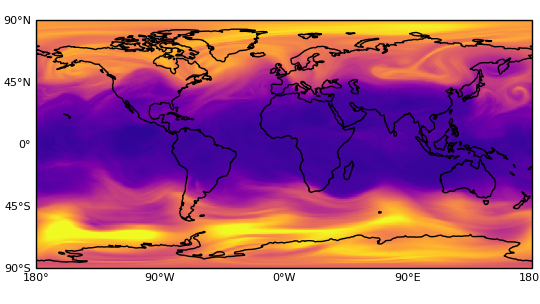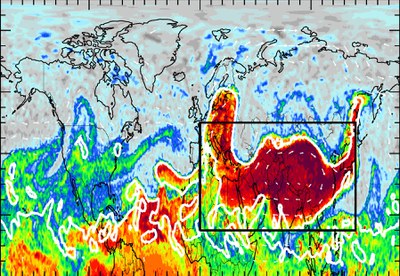The NDACC "Theory and Analysis" Working Group promotes the use of NDACC data for scientific studies. This website is a guide for researchers interested to use the NDACC measurements in combination with atmospheric model results including additional analysis tools.

REPLAY Model Data Set
Contact Person: Sarah A. Strode (sarah.a.strode@nasa.gov)
GEOS-GMI replay simulations use the Global Modeling Initiative (GMI) chemistry mechanism (Duncan et al., 2007; Strahan et al, 2013; Nielsen et al., 2017)
to simulate global tropospheric and stratospheric chemistry within the Goddard Earth Observing System (GEOS) model (Molod et al., 2015).
A replay technique (Orbe et al, 2017) is used to “replay” the model’s meteorology to reanalysis fields. We extracted output at the locations of the
NDACC stations from a GEOS-GMI simulation that replayed to meteorological fields from the Modern-Era Retrospective analysis for Research and Applications,
Version 2 (MERRA-2) reanalysis (Gelaro et al, 2017). The simulation has a horizontal resolution of approximately 25km and includes time-dependent emissions,
as described in Fisher et al. (2024).
https://acd-ext.gsfc.nasa.gov/Projects/GEOSCCM/
https://ndacc.larc.nasa.gov/data/ma-directory/ndacc-working-groups/theory-analysis

The GMI Model
The GMI Chemistry and Transport Model (CTM) simulates global stratospheric and tropospheric chemistry using the GMI chemical mechanism. Output is
extracted at NDACC station locations. Transport in the GMI CTM simulation is driven by MERRA-2 meteorological fields. The simulation has a horizontal
resolution of 1.25°x1°. Additional information is available on the websites below:
https://gmi.gsfc.nasa.gov/merra2hindcast
https://ndacc.larc.nasa.gov/data/ma-directory/ndacc-working-groups/theory-analysis

The CLaMS Model
Contact Person: Bärbel Vogel (b.vogel@fz-juelich.de)
The
Chemical Lagrangian Model of the Stratosphere (CLaMS) was developed
during the last decades at Institute of Climate and Energy Systems
(Stratosphere: ICE-4) at the Research Center Jülich (Germany). CLaMS
can be used as a conceptual trajectory model, in an offline,
reanalysis-driven chemistry transport model version or online in a
climate model version. Different CLaMS products such as pure trajectory
calculation, artificial model tracers to tag air masses (e.g. surface
origin tracers, age of air) as wells as chemical traces gases in the
upper troposphere and stratosphere can be made available on request.
More details are available on the ICE-4 website:
https://www.fz-juelich.de/en/ice/ice-4/about_us/ice4-theory
https://www.fz-juelich.de/en/ice/ice-4/research/synergetic-use-of-instruments-and-models/climate-and-atmospheric-process-modeling
Working Group Representatives to the NDACC Steering Committee
| Dr. Sarah A. Strode | Dr. Bärbel Vogel | |
|---|---|---|
|
Morgan State University NASA, Goddard Space Flight Center Maryland, USA |
Forschungszentrum Jülich GmbH (FZJ) Institute of Climate and Energy Systems (ICE) Stratosphere (ICE-4) Jülich, Germany |
|
| sarah.a.strode@nasa.gov | b.vogel@fz-juelich.de |